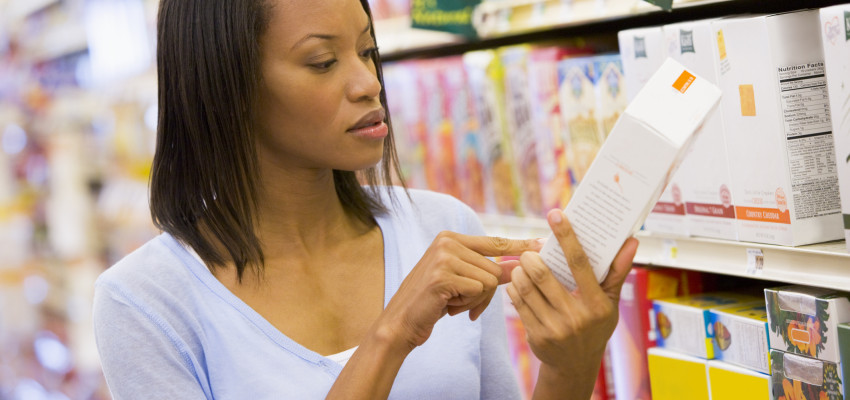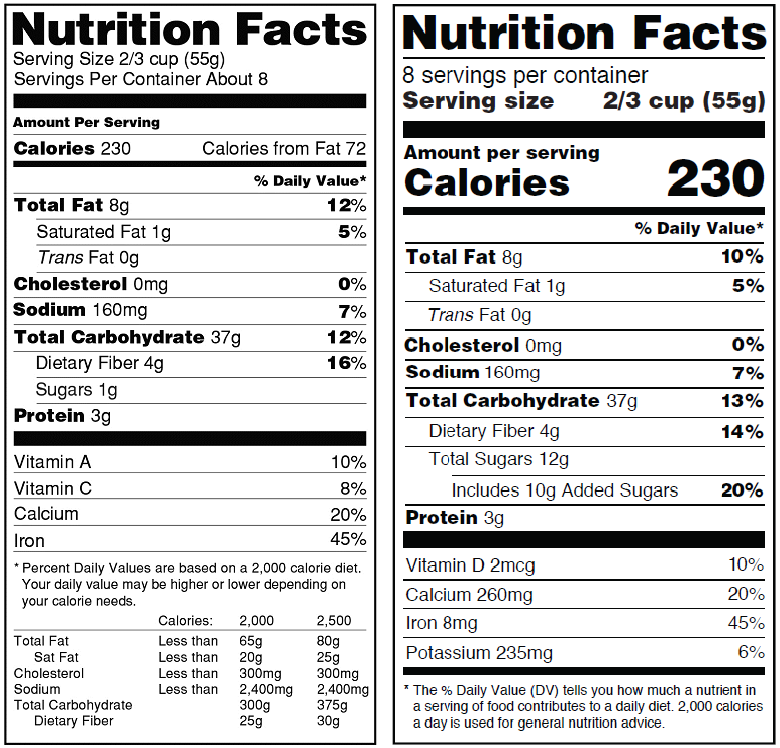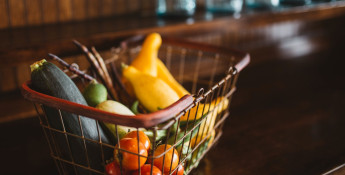By Cara Harbstreet on June 24, 2016
New nutrition labels coming
What do you need to know?

What if you held in your hand a tool that could tell you exactly what you wanted to know about a product’s contents and quality? It’s something we demand from the tools we use in everyday life, whether we’re at home, on the farm or in the car and it’s essential for safety and efficiency.
Have you considered each time you browse the grocery store aisles you have an abundance of tools that can do just that? It’s the nutrition facts label, and though we haven’t seen changes to it in more than 20 years, there is a new age dawning as food companies start moving toward the newly redesigned and updated label.
The Food and Drug Administration (FDA) recently approved the new label design, though it will be approximately two years before it begins to appear on products and grocery store shelves. The deadline of July 2018 allows time for the food manufacturers to comply. Smaller companies with annual sales of less than $10 million will have an additional year. All of the updates are intended to help us as food consumers better understand the nutritional quality of the foods we choose.
Here’s a breakdown of the major changes we can expect to see (moving from top to bottom of the label):
1) More realistic serving sizes
Updates to the serving sizes will reflect amounts that are closer to what most Americans actually eat. There’s often disconnect between what we serve ourselves versus the intended serving size that appears on the label. My favorite example? Ice cream. Right now, labels indicate that ½ cup is equivalent to one serving. I don’t know about you, but I am hard pressed to stick to that. In the future, one cup will be considered a serving. That’s more like it! Though do take note, this concept applies to any food container for which one person might realistically consume the whole thing, such as a pint of ice cream, 20 oz. bottle of soda, or individual sized bag of chips. Larger containers will still reflect multiple servings per container, identical to how it currently appears on the label.
2) No more calories from fat
In the early days of the nutrition facts label, the United States was in full-blown attack mode when it came to fat. It was the booming era of low-fat, no-fat or reduced-fat products in an effort to limit calories. We’ve come so far in the last 20 years when it comes to understanding how fat and other nutrients really impact human health. As a dietitian, this is a row that I rarely (if ever) paid attention to – it’s more about the quality than quantity of the fats you consume and for that, the ingredient list is a more helpful source of information.
3) Reformatting of Calories
What grabs your attention more? This….or THIS? The current label features the total calories for a food in the same size as the rest of the label, making it difficult to distinguish from anything else. The new design puts it front and center so it catches your eye more easily.
As a dietitian, calorie counting isn’t always my favorite approach, but it is important to have a general understanding of how much energy we’re consuming through foods we choose. By making the total calories more obvious, it will hopefully help folks make smarter food decisions in the grocery store when comparing products side by side.
4) Adding the Added Sugars
How much sugar do we actually consume? If you’re like most Americans you A) don’t have a clue how much and B) are likely consuming far more than you should. Added sugar is everywhere these days, especially in highly processed foods. Each teaspoon of sugar is just over four grams so it’s easy to see how challenging it can be to keep our sugar intake in check. The World Health Organization (WHO) recommends that women stick to six teaspoons or less per day, while men should stick to nine teaspoons or less per day. To put that in perspective, just one 12 oz. can of regular soda packs in just over nine teaspoons (39 grams) – a full day’s worth for the average adult man.
I think highlighting the ratio of natural to added sugar is one of the most important changes we will see with this new label. However, it’s important to distinguish between natural sugars, like those that we find in fruits, dairy and simple starches, and the added sugars that are more prevalent than ever in our food supply.
5) New Nutrients of Concern
At the bottom of the old nutrition facts label there was a list of nutrients of concern, or nutrients commonly under consumed in the American diet. The list currently includes Vitamin A, Vitamin C, Calcium and Iron. In the future, Vitamin A and Vitamin C will be replaced by Potassium and Vitamin D and all nutrients will appear with the milligram (mg) or microgram (mcg) amounts. This gives a much clearer idea of not only which nutrients we should strive to get adequate amounts of but also how much a food will provide.
In addition, minor changes are being made to the footnote and the daily value percentages. In spite of the new changes coming our way, this dietitian will still be looking at the major players that haven’t changed:
- Sodium: Sugar isn’t the only thing that’s easy to get too much of; sodium is another culprit in highly processed foods that contributes to health issues. Healthy adults should consume no more than 2,300 mg of sodium per day (1,500 mg per day if certain risk factors are present). My rule of thumb is to aim for 700 mg or less per meal, so sodium is often the first thing I’m scanning for on the food label.
- Fiber: Enough talk about what we get too much of…what about what we don’t get enough of? At the top of that list is fiber. Women should aim for 25 grams per day or more, while men should strive for 35 grams per day. That’s easier said than done, especially if we aren’t getting a lot of fresh produce or whole grains in our diet. The reality is that most of us don’t get nearly the amount of fiber that we should. If you’re stuck between two products that are similar across the label, opt for the one with the higher fiber content to get you a little bit closer to your daily goal.
- Ingredient list: I think of the ingredient list as a sneak peek behind the label. Sure, that’s going to tell you what’s in the food itself, but the ingredient list gives much better insight into the quality of the nutrition you’ll be getting once you eat it. Look for red flags like allergens, additives or added sugars you decide to avoid. It takes your nutrition investigation one step further to choose healthier foods for you and your family.
What’s the final result? Take a look at this side-by-side comparison of the old label (left) and the newly approved label (right).
 (Source: http://www.fda.gov/Food/GuidanceRegulation/GuidanceDocumentsRegulatoryInformation/LabelingNutrition/ucm385663.htm#images)
(Source: http://www.fda.gov/Food/GuidanceRegulation/GuidanceDocumentsRegulatoryInformation/LabelingNutrition/ucm385663.htm#images)
What do you think of the changes? While most Americans report viewing at least one aspect of the nutrition facts label, it is unclear how that information is interpreted or how it influences behavior.
There is always room for improvement but just like before, I won’t be aiming for perfection. I’m going to continue using the nutrition facts label as my guide for making smart nutrition choices for foods I love to eat.
Will you be making any new healthy habits when it comes to reading the nutrition facts label?
You might also enjoy





